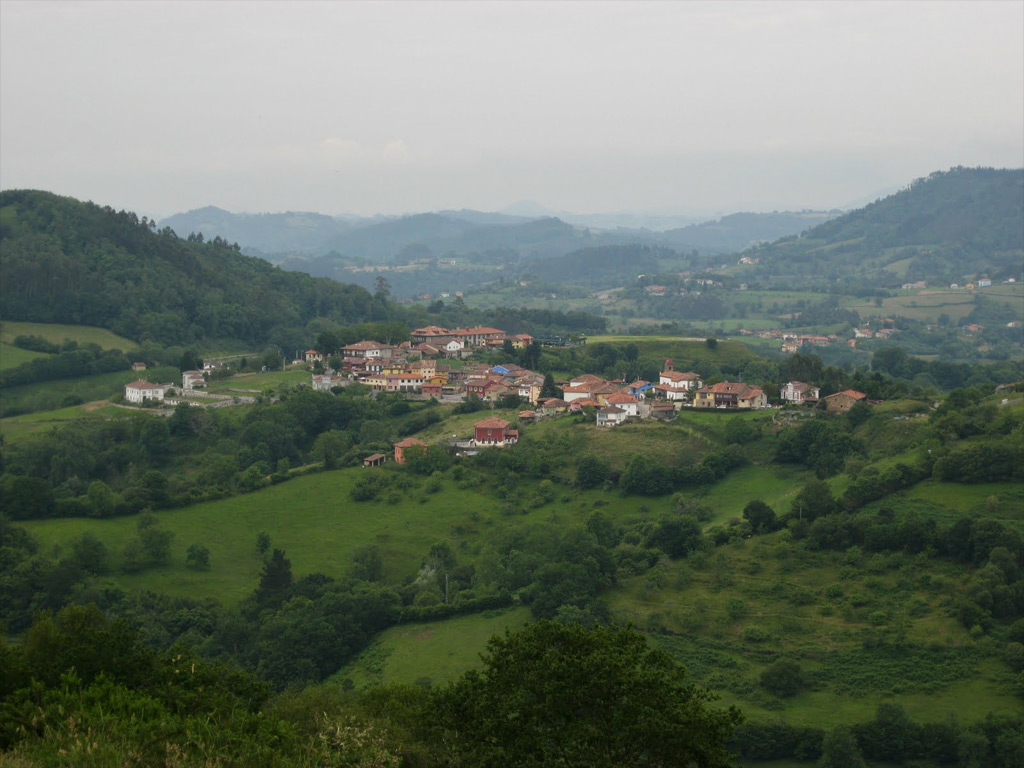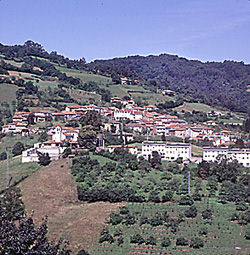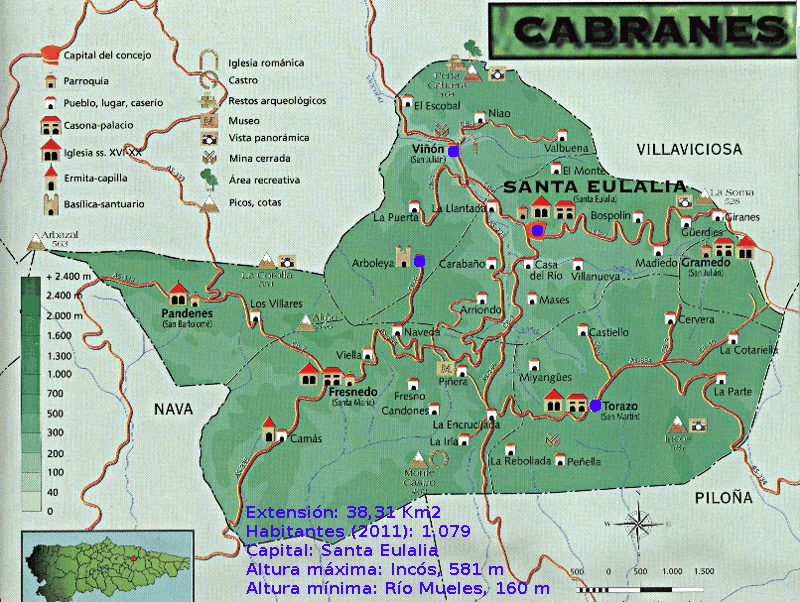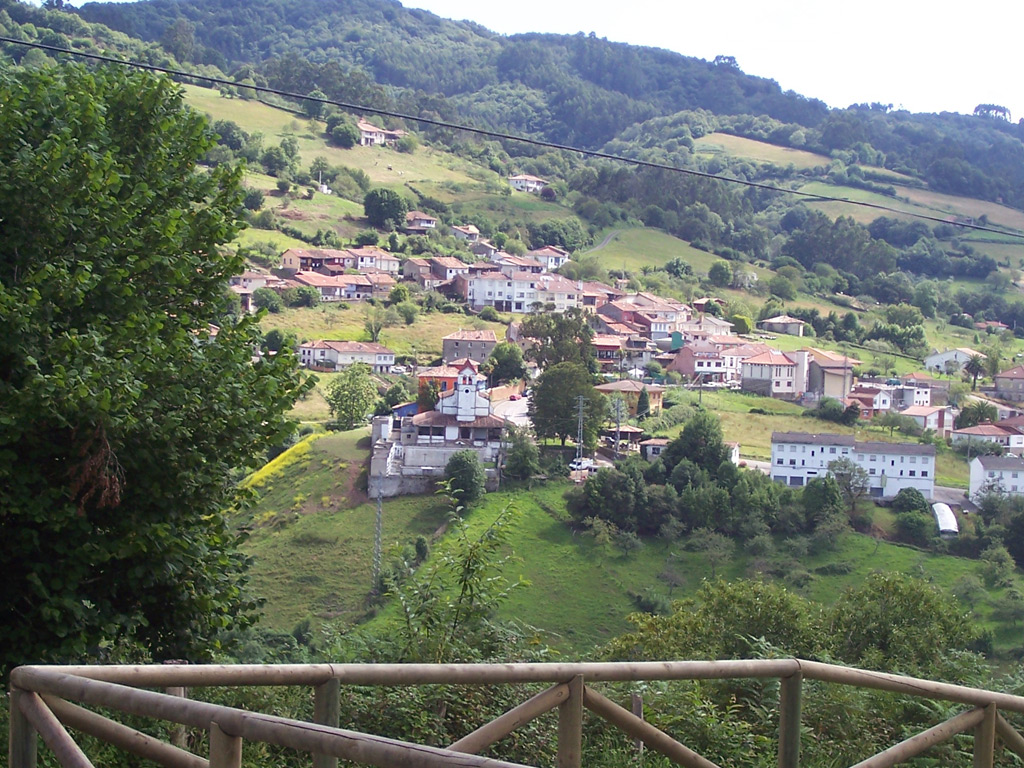Cabranes
Cabranes, ( Cabranes also in Asturian ) is a municipality in the autonomous community of Asturias, in northern Spain.
The municipality is bordered by Villaviciosa in the north and east, in the south of Piloña and Nava.
The administrative center of the municipality is Santa Eulalia, the district court Piloña.
- 3.1 specialties
History
As almost everywhere in Asturias confirm findings from the Paleolithic the early settlement of the region.
Remains of burial mounds can still be seen today on the municipal boundary to Villaviciosa and two more on the mountains Inco and Montaliñu.
The colonization of the Castro culture of the Romans and Moors have left no remarkable traces, but shaped the character of the population.
The first written record comes from the year 846, and was found in the parish church of Gramedo. In this document, the capital municipality of Santa Eulalia is set and the first boundaries of the municipality.
In the 13th century, the monastery " Monasterio de Santa María de Valdediós " was established in neighboring Villaviciosa, the monastery was the religious line (and thus revenue) also transferred the municipality Cabranes.
Constant friction with the local noble families were the result. It was only in the 16th century came off this dependence and the feudal duty changed drastically.
Geology
Mountains, rivers and lakes
The main rivers of the community are: the Río Viacaba and the Rio sales. In the south, the municipality also arise rivers Punegru Rio, Rio la Faya, Rio de l' Arosa and the Rio Valdés.
Transport links
- Nearest international airport: Asturias Airport, the regional airport of La Morgal.
- Stops the feve and ALSA are in every place.
- The AS -255 (North / South ) and the AS-334/335 (East / West) are the main roads of the community.
Economy
Since time immemorial, agriculture, and particularly cattle farming with all its ancillary operations such as dairies / cheese is the main source of income of the municipality. Trade and industry are found exclusively in small and medium-sized businesses. The service sector of the tourism industry is also here, the division with the greatest growth.
Specialties
The regional cuisine in the village is characterized by hearty stews such as the famous bean stew and hearty stews. Add tomato and olives braised rabbit is a revelation.
The community is famous for rice pudding is cooked here in a sweet or hearty form. The Mich rice is even a festival week devoted (Festival del Arroz con Leche ).
Demographics
Policy
The 9 seats in the municipal council are distributed as follows:
Attractions
- Church " Iglesia de San Julián " de Viñón
- Chapel " Capilla San Lorenzo de camas "
- Parish church " Iglesia de Santa Eulalia "
- Church " Iglesia de Santa Maria la Real" in Fresnedo
- Church " Iglesia de San Martín " in Torazo
- Chapel " Capilla de la Sienrra " in Torazo
- School museum " Museo de la Escuela Rural" in Viñon
Parroquias
1098 residents live in six parroquias:
- Fresnedo ( Fresnéu ) - 293 inhabitants in 2007 43 ° 23 ' 54 " N, 5 ° 26' 37 " W43.398412418889 - 5.4435427936111315
- Gramedo ( Graméu ) - 36 inhabitants in 2007 43 ° 24 ' 49 " N, 5 ° 22 ' 48" W43.413719959722 - 5.3799537697222422
- Pandenes - 53 inhabitants in 2007 43 ° 24 '32 " N, 5 ° 28' 8" W43.408876694444 - 5.4689545566667455
- Santa Eulalia ( Santolaya ) - 320 inhabitants in 2007 43 ° 25 '2 " N, 5 ° 24' 40 " W43.417126043056 - 5.4111867525297
- Torazo ( Torazu ) - 248 inhabitants in 2007 43 ° 23 '42 " N, 5 ° 24 ' 0" W43.395061786944 - 5.4000496086111433
- Viñón ( Cabranes ) - 122 inhabitants in 2007 43 ° 25 ' 38 " N, 5 ° 25' 27" W43.427220306944 - 5.4241992172222363
Swell
- Population figures, see INE
- Zip see
- Coordinates and altitude information see Google Earth










